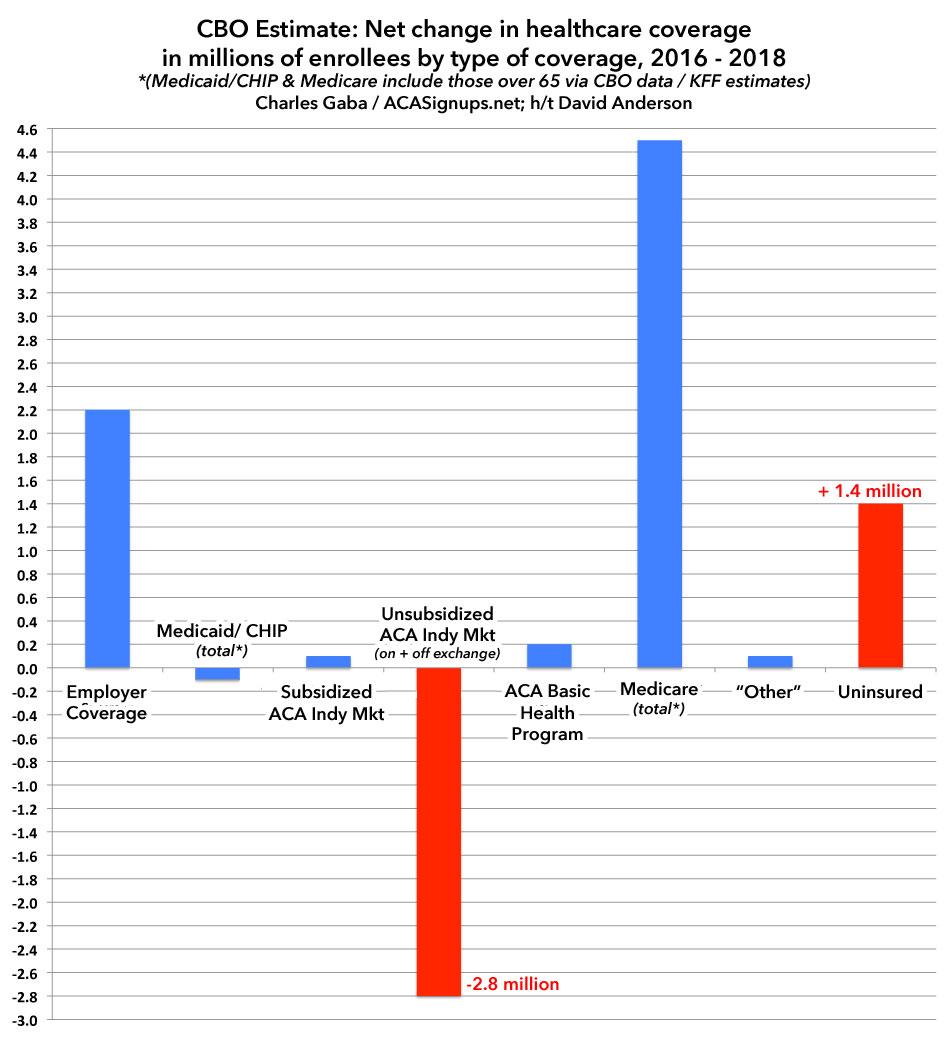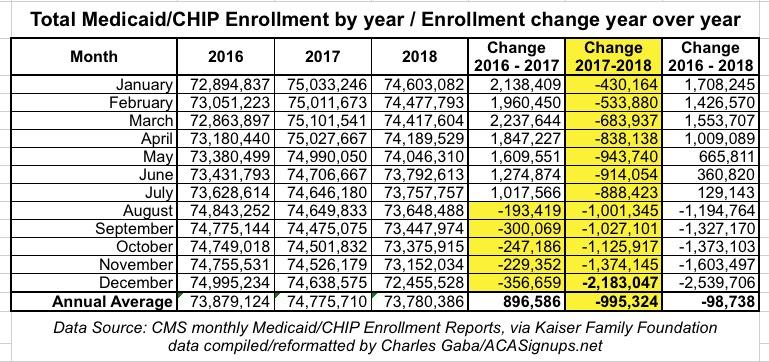On average, a million people lost Medicaid/CHIP coverage last year...nearly all of them children.
Last week, Joan Alker of the Georgetown University Center for Children and Families noted that a whopping 840,000 children lost Medicaid or CHIP coverage in 2018:
We've taken a closer look at these #'s - check out your state below.
The net national # is 840k kids losing Medicaid/CHIP in 2018 not 860k as we said initially
But in the 39 states losing kids on Medicaid the net total # is worse -- 920,000https://t.co/dOOD4gyAOw https://t.co/jhs22mNc0w
— Joan Alker (@JoanAlker1) April 26, 2019
There's a link to a whole analysis which breaks the numbers out by state:
We’ve been anxiously awaiting the release of final Medicaid and CHIP enrollment data for 2018, which was expected to be posted almost a month ago. The wait is finally over but not our concerns about what’s happening.
In the meantime, more stories about eligibility system issues in a handful of states and states conducting more frequent reviews of eligibility have been reported. And we wanted to get a complete picture so we found state sources of child enrollment data in three states – Arizona, the District of Columbia, and Tennessee – that are missing from the CMS data. The CMS data show a drop in child enrollment of just under 720,000 for the 48 states. When you add in data for the three missing states, the overall decline in children covered by Medicaid and CHIP nationwide tops 840,000 with 39 states showing net enrollment losses of about 920,000. Tennessee saw the largest percentage decline (10.1%), followed by Missouri (9%), Mississippi (7.8%), Utah (7.3%), and Idaho (6.5%). States with the largest decline in the number of children enrolled in Medicaid and CHIP include California (153,000), Texas (146,000), Tennessee (88,000), Florida (69,000), Illinois (68,000), and Ohio (56,000). (See state by state enrollment data here.)
So the burning questions are: 1) why? and 2) are these children gaining coverage elsewhere, as the administration would have you believe, or are they becoming uninsured?
It’s true that the economy has improved, unemployment has declined, and there is even some evidence of a small uptick in the number of employers offering health insurance to their employees. And we agree that some portion of children leaving Medicaid and CHIP are likely gaining coverage through other sources. But the employer sponsored insurance market has long fallen short of providing coverage for low-income families. That’s why CHIP was created two decades ago – to fill the growing coverage gap for children in families with moderate income as the cost of private coverage rose and employer subsidies for dependent coverage declined.
This study came to mind earlier today when I posted this entry about the Congressional Budget Office's report regarding how healthcare coverage has changed over the past two years. Take another look at this chart:
If you focus on the second bar from the left (Medicaid/CHIP coverage), you'll notice that according to official HHS figures, total Medicaid/CHIP enrollment (including those over 65 years old) only dropped by around 100,000 people between 2016 and 2018. Yet the Georgetown CCF report notes that children's enrollment in these programs has dropped by over 8x that amount. What's going on?
At first I assumed that most of those children being kicked out of the programs were being cancelled out by adults being added to Medicaid roles via ACA expansion, and that might be part of it...but then I realized that CFF's study is only looking at one year, while the CBO data covers two years.
Therefore, I decided to plug total monthly Medicaid/CHIP enrollment into a spreadsheet for 2016, 2017 and 2018 to see the change over time, and voila:
Sure enough, both figures are accurate. Nearly a million people did lose Medicaid/CHIP coverage from 2017 to 2018, nearly all of whom were children...but at the same time, the net Medicaid/CHIP enrollment drop from 2016 to 2018 is only 100,000...because enrollment had previously increased by nearly 900,000 from 2016 to 2017.
However, these are only the average annual numbers. When you look at the month-to-month trend, it's considerably more concerning: Monthly Medicaid/CHIP enrollment was increasing for the first half of 2017 (i.e., the first six months of Donald Trump's term in office), but then began to reverse itself in August 2017...and that monthly drop has been ramping up nearly every month since then.
In fact, total Medicaid/CHIP enrollment in December 2018 was nearly 2.2 million fewer than December 2017. This trend is still continuing into 2019: In January 2019, 72.4 million were enrolled in the programs, over 2.21 million fewer than in January 2018.
As the Georgetown study notes, this would be a good thing if it meant that those 2.2 million people (including over 840,000 children) had simply shifted to a different type of comprehensive, truly affordable healthcare coverage...but given the population that we're talking about and the circumstances under which so many are losing Medicaid/CHIP coverage, that seems pretty unlikely in most cases.





